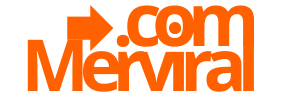$1000 Investment Ideas: Grow Your Money Wisely
Investing, even with a seemingly modest sum like $1000, is a crucial step toward building long-term financial security. While it won’t make you instantly wealthy, strategic allocation can lay the foundation for future growth. This article explores diverse investment avenues suitable for a $1000 budget, emphasizing risk tolerance, investment timelines, and potential returns.
1. High-Yield Savings Accounts (HYSAs): The Foundation of Stability
While technically not an investment in the traditional sense, a High-Yield Savings Account is a safe and liquid place to park your $1000, particularly if you’re new to investing or need immediate access to the funds. HYSA rates are significantly higher than traditional savings accounts, offering a modest but reliable return.
- Pros: FDIC-insured (protecting your money up to $250,000 per depositor, per insured bank), highly liquid, low-risk, easy to access online.
- Cons: Returns are typically lower than other investment options, may not keep pace with inflation in the long run.
- When it’s ideal: Building an emergency fund, saving for short-term goals (e.g., vacation, down payment on a car), learning the basics of online banking and account management.
- Things to consider: Compare interest rates from different banks and credit unions. Look for accounts with no monthly fees or minimum balance requirements.
2. Certificate of Deposit (CD): Locking in Returns for Predictable Growth
A Certificate of Deposit (CD) is a type of savings account that holds a fixed amount of money for a fixed period (term), typically ranging from a few months to several years. In exchange, you receive a guaranteed interest rate, which is usually higher than that of a HYSA.
- Pros: Fixed interest rate (providing predictability), relatively low-risk (FDIC-insured), potentially higher returns than HYSAs.
- Cons: Limited liquidity (penalty for early withdrawal), interest rates may not outperform inflation or other investments, opportunity cost if interest rates rise during the term.
- When it’s ideal: Saving for a specific goal with a defined timeframe (e.g., a wedding in two years), maximizing returns on savings you don’t need immediate access to.
- Things to consider: Compare interest rates and terms from different banks and credit unions. Consider laddering CDs (buying CDs with staggered maturities) to provide liquidity and access to potentially higher rates in the future.
3. Stock Fractional Shares: Entering the Market with Lower Barriers
Fractional shares allow you to buy a portion of a single share of stock, enabling you to invest in companies with high share prices that would otherwise be unaffordable. With $1000, you can diversify your portfolio by purchasing fractions of shares in several different companies.
- Pros: Allows investment in high-priced stocks with limited capital, promotes diversification, convenient and accessible through online brokerages.
- Cons: Potential for loss of principal (stocks fluctuate in value), requires research and understanding of the stock market, brokerage fees (though many platforms offer commission-free trading).
- When it’s ideal: Learning about the stock market, investing in specific companies you believe in, diversifying your portfolio.
- Things to consider: Choose a reputable brokerage with commission-free trading. Research companies thoroughly before investing. Start with a small allocation and gradually increase your investments as you gain experience.
4. Exchange-Traded Funds (ETFs): Instant Diversification at a Lower Cost
Exchange-Traded Funds (ETFs) are baskets of stocks, bonds, or other assets that trade on stock exchanges like individual stocks. They offer instant diversification, spreading your investment across a range of holdings, reducing risk compared to investing in individual stocks.
- Pros: Instant diversification, lower expense ratios compared to mutual funds, easy to buy and sell on stock exchanges, various ETFs available to match different investment strategies (e.g., growth, value, dividend).
- Cons: Potential for loss of principal, expense ratios (though generally low), market risk.
- When it’s ideal: Building a diversified portfolio, investing in specific sectors or industries, tracking a market index (e.g., S&P 500).
- Things to consider: Research different ETFs and their underlying holdings. Pay attention to expense ratios (the annual fee charged to manage the fund). Choose ETFs that align with your investment goals and risk tolerance.
5. Index Funds: Broad Market Exposure for Long-Term Growth
Index funds are a type of mutual fund or ETF that aims to track the performance of a specific market index, such as the S&P 500 or the Dow Jones Industrial Average. They offer broad market exposure at a low cost, making them a popular choice for long-term investors.
- Pros: Broad market diversification, low expense ratios, passive investment strategy (requires less monitoring), potential for long-term growth.
- Cons: Potential for loss of principal, limited ability to outperform the market, market risk.
- When it’s ideal: Long-term investing, building a diversified portfolio, tracking the overall market performance.
- Things to consider: Choose index funds with low expense ratios. Consider investing in a combination of different index funds to diversify your portfolio further (e.g., a U.S. stock index fund, an international stock index fund, and a bond index fund).
6. Robo-Advisors: Automated Investment Management for Beginners
Robo-advisors are online platforms that use algorithms to manage your investments based on your risk tolerance, investment goals, and time horizon. They typically offer diversified portfolios of ETFs at a low cost.
- Pros: Automated investment management, low cost, diversified portfolios, suitable for beginners, convenient and easy to use.
- Cons: Limited control over investment decisions, less personalized service compared to a human financial advisor, potential for loss of principal.
- When it’s ideal: New to investing, prefer a hands-off approach, want a diversified portfolio at a low cost.
- Things to consider: Research different robo-advisors and their fees. Ensure the platform offers a portfolio that aligns with your risk tolerance and investment goals.
7. Bonds: Lower Risk Fixed Income
Bonds are debt securities representing a loan made by an investor to a borrower (typically a corporation or government). They offer a fixed income stream and are generally considered less risky than stocks. With $1000, you can invest in bond ETFs or individual bonds (depending on the denomination).
- Pros: Lower risk than stocks, fixed income stream, can provide stability to a portfolio.
- Cons: Lower potential returns compared to stocks, susceptible to interest rate risk (bond prices can fall when interest rates rise), inflation risk (inflation can erode the purchasing power of bond yields).
- When it’s ideal: Seeking lower risk investments, generating income, diversifying a portfolio.
- Things to consider: Research different types of bonds (e.g., government bonds, corporate bonds). Pay attention to credit ratings (lower-rated bonds offer higher yields but carry more risk).
8. Real Estate Investment Trusts (REITs): Exposure to the Real Estate Market
Real Estate Investment Trusts (REITs) are companies that own or finance income-producing real estate. By investing in REITs, you can gain exposure to the real estate market without directly owning property.
- Pros: Exposure to the real estate market, potential for dividend income, diversification.
- Cons: Potential for loss of principal, susceptible to interest rate risk, market risk, and property-specific risks.
- When it’s ideal: Seeking exposure to the real estate market, generating income, diversifying a portfolio.
- Things to consider: Research different types of REITs (e.g., equity REITs, mortgage REITs). Pay attention to the REIT’s management team and financial performance.
9. Peer-to-Peer Lending (P2P): Higher Risk, Higher Potential Returns
Peer-to-Peer (P2P) lending platforms connect borrowers directly with investors. You can lend your money to individuals or small businesses in exchange for interest payments. P2P lending offers the potential for higher returns than traditional investments, but it also carries higher risk.
- Pros: Potential for higher returns, diversification, opportunity to support borrowers.
- Cons: Higher risk of default (borrowers may not repay their loans), illiquidity (difficult to sell your loans before maturity), regulatory uncertainty.
- When it’s ideal: Seeking higher returns, willing to accept higher risk, diversifying a portfolio.
- Things to consider: Research different P2P lending platforms. Diversify your investments across multiple borrowers. Understand the risk ratings assigned to borrowers.
10. Investing in Yourself: The Ultimate Return on Investment
While not a traditional investment, spending $1000 on your personal or professional development can yield significant returns in the long run. This could include online courses, certifications, workshops, or attending industry conferences.
- Pros: Increased earning potential, improved skills and knowledge, career advancement opportunities, personal fulfillment.
- Cons: Requires time and effort, no guaranteed return on investment, may not see immediate results.
- When it’s ideal: Seeking to improve your skills, advance your career, increase your earning potential.
- Things to consider: Choose courses or certifications that are relevant to your career goals. Set realistic expectations and track your progress. Network with other professionals in your field.
Ultimately, the best investment for your $1000 depends on your individual circumstances, risk tolerance, and investment goals. Remember to conduct thorough research, diversify your investments, and consult with a financial advisor if needed.

